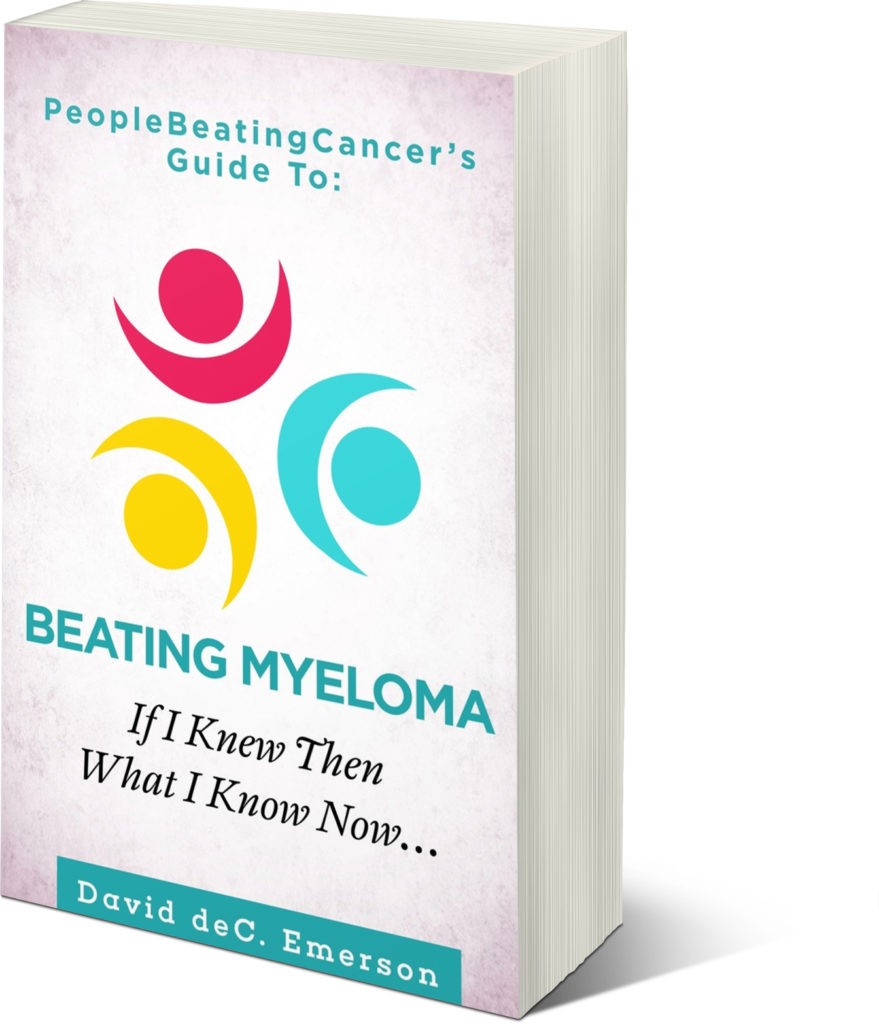
Recently Diagnosed or Relapsed? Stop Looking For a Miracle Cure, and Use Evidence-Based Therapies To Enhance Your Treatment and Prolong Your Remission
Multiple Myeloma an incurable disease, but I have spent the last 25 years in remission using a blend of conventional oncology and evidence-based nutrition, supplementation, and lifestyle therapies from peer-reviewed studies that your oncologist probably hasn't told you about.
Click the orange button to the right to learn more about what you can start doing today.
- You are here:
- Home »
- Blog »
- Multiple Myeloma »
- Relapsed/Refractory Myeloma- Patients
Relapsed/Refractory Myeloma- Patients

“A study consisting of interviews and focus groups among patients with relapsed/refractory multiple myeloma brought attention to what patients value about their treatment.”
Wow. Oncology has been studying multiple myeloma for decades and the study linked below talks about the first study ever to ask relapsed/refractory multiple myeloma patients about their preferences.
Ever since I can remember I have been conflicted about the idea of oncologists being the MM “experts.” Certainly oncs are well-educated and have a great deal of experience with all things related to conventional thinking when it comes to MM.
But oncologists don’t have MM. They don’t know what it’s like to live with an incurable cancer. The study below talks about relaped/refractory MMers. Those MMers who have ridden the MM rollercoaster. They have felt the ups of achieving remission and they have experienced the downer of relapse.
And there is nothing like living with short, long-term and late stage side effects. “Numerous Cognitive side effects of treatment” aka Chemobrain is specifically discussed by RRMMers as reducing a survivor’s quality of life. My interpretation is that MM survivors are saying that quality of life is just as important as length of life. Or, to look at it another way, what good is length of life if your quality of life is reduced by fatigue, chronic pain and chemobrain?
If you’re like me, you assume that your oncologist understands the need to balance quality with quantity of life. Don’t assume this. Talk with your oncologist. Tell him/her what you want.
To Learn More About Relapsed/Refractory Myeloma- click now
Scroll down the page, post a question or comment if you’d like to learn more about all things multiple myeloma.
thank you,
David Emerson
- MM Survivor
- MM Cancer Coach
- Director PeopleBeatingCancer
Recommended Reading:
- Got Cancer? Chemotherapy is toxic- less is more
- Secondary Cancer Post Autologous Stem Cell Transplant for Myeloma
- Biochemical Relapse in Multiple Myeloma- To Treat or Not To Treat?
Patient Preferences Should Be Considered for Treatment of Relapsed or Refractory Multiple Myeloma
“A study consisting of interviews and focus groups among patients with relapsed or refractory multiple myeloma brought attention to what patients value about their treatment.
As patient-reported outcomes and the patient voice continue to play a more integral role in cancer care, a new study is shedding light on and underscoring the importance of including patient preferences when deciding on treatment for relapsed or refractory multiple myeloma (RRMM).
After conducting qualitative interviews and focus groups among 32 patients with RRMM across Canada, researchers of the study came away with the understanding that patients prioritize treatments that could enhance life expectancy, mitigate side effects, and control financial burdens.
With previous research on patient preferences typically focusing on MM, the study offers a rare look at the preferences of patients with RRMM, who may have different priorities due to their longer-term experiences with the disease.
“Most research to date has focused on clinical prognostic factors and therapies to target the most complex pathogenesis of multiple myeloma,” wrote the researchers. “Relatively little attention has been paid to patients’ experiences of the disease in the published literature—still less so in the context of RRMM.”
The qualitative interviews entailed individual in-depth interviews to get an understanding of patients’ experiences with the disease and related issues.
During the interviews, patients indicated that fatigue, musculoskeletal pain, gastrointestinal symptoms, neuropathy, and neutropenia were common physical side effects. They also reported numerous cognitive side effects of treatments, including difficulty concentrating and memory lapses, as well as emotional and psychological side effects, such as mood swings. According to the researchers, these side effects often resulted in broader implications relating to quality of life, with patients reporting disruptions in social relations and their ability to work and pursue other valued activities.
Reflecting on these side effects, conversations from the focus groups provided a more comprehensive look at these experiences by identifying priorities related to treatments. These discussions resulted in a list of 10 priorities for patients when it came to their treatments. Falling behind the highest priorities, which address life expectancy, physical and cognitive side effects, and the financial impacts, patients also prioritized the following:
- The treatment does not require use of dexamethasone or requires limited use of the steroid
- The treatment does not preclude other treatments or make other treatment ineffective
- How the treatment is administered
- The treatment allows for down-time or off-treatment breaks during treatment periods
- Treatment side effects are predictable
- The treatment does not increase sleep disturbances or mood swings
- The treatment and the healthcare provider are accessibly located
- There is smooth and consistent access to medications
“Our study has important implications for cancer survivors: a clear articulation of their priorities can contribute to efforts to design treatment with patients’ concerns in mind, thereby promoting a more patient-centered approach to care,” the authors wrote.
Reference
Parsons J, Greenspan N, Baker N, McKillop C, Hicks L, Chan O. Treatment preferences of patients with relapsed and refractory multiple myeloma: a qualitative study [published March 25, 2019]. BMC Cancer. doi: 10.1186/s12885-019-5467-x.



